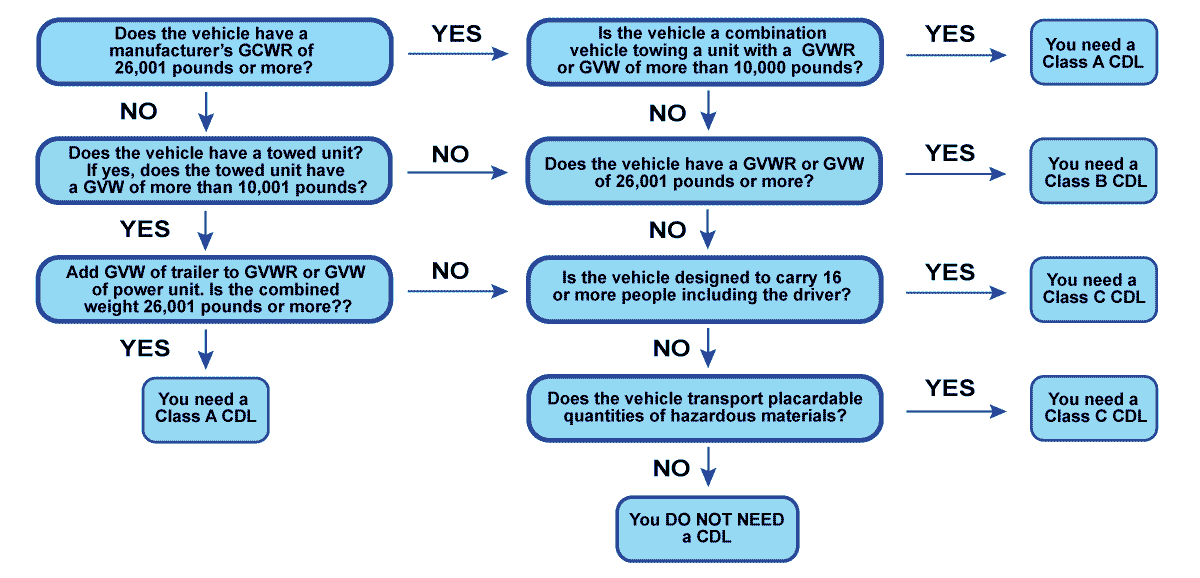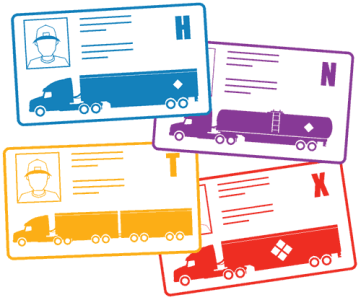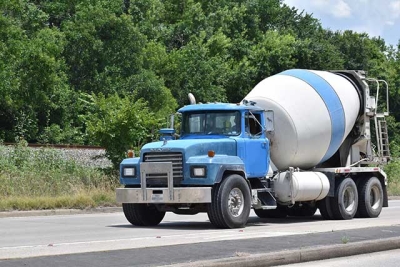What is a Class A CDL License?
What is a Class B CDL License?
What is a Class C CDL License?
Operating a heavy-duty vehicle requires specialized knowledge and licensing that far exceeds the basic skills needed to drive cars, pickup trucks, and SUVs.
Drivers must acquire the knowledge, experience, skills, and physical abilities necessary to operate Commercial Motor Vehicles (CMV) and then pass a Commercial Driver’s License (CDL) examination. Applicants face testing that covers safety and practical knowledge, as well as the ability to handle a big rig in real-time.
In recent years, agencies such as the Federal Motor Carrier Safety Administration (FMCSA) created additional physical fitness standards. As a result, professional truck drivers must now demonstrate their health and wellness to operate a CMV safely.
In this article, we'll break down key differences among Class A, B, and C licenses, as well as vehicle and job types one can expect to be authorized to drive and attain. 
What is a Class A CDL?
Possessing a Class A CDL allows truckers to operate iconic tractor-trailers. A Class A license is typically what everyday people imagine when talking about operating big rigs on the open road.
With a Class A commercial driver’s license, truckers can operate any combination of vehicles whose gross weight exceeds 26,001, as long as the towed portions are over 10,000 pounds. Common vehicles driven include:
- Tractor-trailers
- Trucks with a trailer combination
- Livestock vehicles
- Flatbed trailers
- Tankers
It is also not uncommon for states to require people who own and drive large RVs to possess a Class A or appropriate CDL.
 Truckers who secure their Class A driver's license generally earn good salaries, and the persistent national driver shortage means drivers with clean records remain gainfully employed. Many Class A CDL-holders also enjoy the opportunity to increase their salaries by earning what the FMCSA calls “endorsements.”
Truckers who secure their Class A driver's license generally earn good salaries, and the persistent national driver shortage means drivers with clean records remain gainfully employed. Many Class A CDL-holders also enjoy the opportunity to increase their salaries by earning what the FMCSA calls “endorsements.”
By passing tests to haul sensitive or hazardous materials, truckers typically see pay increases. The following lettered endorsements correspond to niche loads truckers can haul.
- H: This designation allows professional drivers to transport loads considered hazardous material or HAZMAT. After obtaining a Class A CDL, drivers must pass a written knowledge test.
- N: This endorsement allows truckers to operate tanker vehicles carrying sometimes volatile liquids and gasses. Drivers must pass a written knowledge test to earn this designation.
- T: Although Class A CDLs clear truckers to operate semis, hauling multiple trailers requires this endorsement. Operating a double or triple trailer usually requires drivers to pass an additional knowledge test.
- X: Although the H endorsement allows truckers to haul HAZMAT loads, additional knowledge is required to transport tankers filled with these sometimes dangerous materials. The X designation tasks CDL-holders with passing another niche knowledge examination.
Salary Outlook for Class A Drivers
The Bureau of Labor and Statistics pegged median heavy-duty truck driver salaries at $49,920 per year or $24 per hour in 2022. Higher demand for qualified men and women with a Class A driver’s license has prompted freight carriers and fleet operations to dramatically increase salaries and offer sign-on bonuses. Truck drivers employed by some large fleet operations and Owner-Operators can enjoy top salaries that exceed $100,000.
What is a Class B CDL?
Traveling America’s highways as a long-haul trucker is not necessarily for everyone. Those who wish to earn a steady income as a truck driver without driving long distance can secure a Class B driver’s license.
This type of CDL allows professionals to operate certain vehicles with a gross combination weight at or above 26,001 pounds.
While that threshold mirrors a Class A driver’s license, women and men with a Class B driver’s license cannot lawfully tow a trailer or other load that exceeds 10,000 pounds.
That may seem like hair-splitting to people unfamiliar with the freight hauling industry. However, it typically separates over-the-road (OTR) truckers from those working local or regional routes and occupations.
With a Class B driver’s license, drivers can operate CMVs that include the following:
-
-
-
- Straight Trucks
- Passenger and Public Transportation Buses
- Segmented Passenger Buses
- School Buses
- Box Trucks
- Dump Trucks Pulling Low-Weight Trailers
- Tractor-Trailers that Do Not Exceed Weight Thresholds
-
-
Like professionals who earn a Class A, qualified Class B CDL-holders can also secure endorsements. The endorsement restrictions placed on a Class B driver’s license involve gross weight and not necessarily the materials. Note: One endorsement people with a Class B driver’s license generally pursue more than Class A CDL-holders is “P.” The P endorsement allows professionals with a Class B driver’s license to operate school buses.
Salary Outlook for Class B Drivers
Workers with a Class B driver’s license average wages near $44,000 in 2023, and top earners exceeded $50,000. People who work as Class B drivers enjoy job growth rates of approximately 5 percent, year-over-year, as well as steady employment in most regions.
What is a Class C CDL?
 Earning a Class C driver’s license allows men and women to operate a single vehicle with a weight lower than 26,001 pounds. A Class C CDL opens the door for drivers to tow another vehicle of no more than 10,000 pounds as well as passenger vehicles of 15 riders plus the driver, totaling a maximum of 16 people.
Earning a Class C driver’s license allows men and women to operate a single vehicle with a weight lower than 26,001 pounds. A Class C CDL opens the door for drivers to tow another vehicle of no more than 10,000 pounds as well as passenger vehicles of 15 riders plus the driver, totaling a maximum of 16 people.
Common commercial vehicles operated by drivers with a Class C CDL include:
- Straight Trucks
- Cement Mixers
- Passenger Buses
- Segmented Buses
- Food Trucks
- Garbage Trucks
- Box Trucks
Like a Class A and B CDL, endorsements can be secured by passing knowledge examinations. The “H” or HAZMAT endorsement ranks among the more prevalent among Class C CDL-holders.
5 Steps To Get a CDL License
Age Requirements: To operate a CMV across state lines, drivers generally must be a least 21 years old. The federal government has carved out some exceptions. A qualified CDL can usually operate CMVs within a particular state, depending on its regulations.
- Apply: Apply with the state you possess a driver’s license and include appropriate documentation, including identity verification, proof of residency, and your Social Security number.
- Testing: Applicants must submit a completed Medical Examination Report Form and Medical Examiner’s Certificate, as well as pass a vision and knowledge test.
- Learner’s Permit: Following the successful completion of knowledge and physical testing, applicants are typically issued a learner’s permit. The minimum wait time to schedule a CDL road skills test is usually 14 days.
- Road Test: Applicants must pass a pre-trip inspection and road skills exam and pay the standard fees after receiving a passing grade. Applicants need to keep in mind that DMVs typically do not provide a CMV. Remember to make advanced arrangements to have a CMV available for the road skills test.
Truck Driver CDL Training School
Tuition fees tend to be relatively modest, and leading truck driver training schools often have a long-standing relationship with freight carriers. It’s not unusual for freight-hauling companies to offer newly minted CDL-holders sign-on bonuses that offset upfront tuition expenses.
To learn more about trucking companies as the types of truck driving jobs available for the various types of CDL license holders, review our list of trucking companies hiring today.



